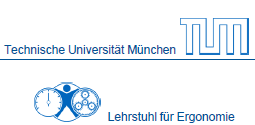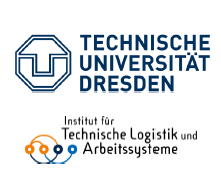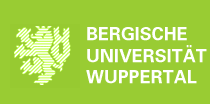
The prelude to the event was the Annual General Meeting of the host club ECN. Members and guests discussed, inter alia, about ways to organize a price for an ergonomic product. The participants agreed that the topic of "ergonomics" us not sufficiently represented in accordance with its increasing importance with increasing technology presence in everyday life in public. That the question of the ergonomics of products is no idle trifling, but decides on health and sometimes life or death, then became quite clear in the presentations.

Accordingly, Prof. Dipl.-Ing Jürgen Held by the University of Design Schwäbisch Gmünd reported serious consequences of ergonomic mistakes in man-machine interfaces in the medical field. When heart-lung machines overwhelm the user, when the controls from surgery robots are arranged unfavorable, then life-saving can quickly end in a fiasco. continue

How important vital work safety may be at cold work places, the audience learned from Prof. Dr. Ing Karsten Kluth. At the University of Siegen has been explored for some time, which anthropometric characteristics in humans are favorable or unfavorable to work at -24 ° C. The team led by Prof. Kluth found out how temperature drop to humans impact and the extent to which insulating protective clothing can increase the defensible stay on cold jobs. continue

Prof. I.R. Dr. rer. nat. Heiner Bubb, Chair of Ergonomics Technical University of Munich, considered the question, when a product is in demand. The two criteria "reasonable use" and "aesthetic feeling of comfort", met by successful design e.g., are crucial so that the consumer creates the desire to own the product. continue

How the scientists arrive at their findings, was the focus of the presentation by Dipl.-Ing. Hartmut Mutschler. He presented scientific methods of ergonomists, adressed problems in sample selection, gave suggestions for the collection of data and the definition of research subjects. continue

Individualization is an important issue for ergonomists. The same is not for all people equally well. A simulation by a digital human model makes an individual workstation design possible in advance of planning the job. At the Technical University of Dresden in the Faculty of Mechanical Engineering was exploited numerous insights about the human body and its capacity. It was developed a digital ergonomics system that make it possible to check interactively spatial relationships, acting on the human forces and visual conditions. Prof. Dr.-Ing. Martin Schmauder explained the current state of development. continue

From his vision of individual handles for tools reported graduate student Aydin Ünlü. With its planned research at the University of Wuppertal, Department of Mechanical Engineering, he wants to pave the way for an individual comfort optimization for hand tool handles. continue

The individuality of the people in the cognitive domain was the focus of the presentation by Dr. Rudolf Haller. To identify habits of thought as a problem and opportunity in human-machine interactions and adapt the design of the human-machine interface to control and learning behavior was subject of the ergonomist and Feldenkrais teacher. continue

The research results of ergonomists at the Institute for Applied Work Science are used for the development of practical concepts in human resource management. So, Prof. Dr.-Ing. Sascha Stowasser outlined a coordinated set of measures for a forward-looking firm demography, covering campaigns to maintain the physical and mental capabilities, health management and organization of working time. continue

A particularly vivid example of the implementation of research in ergonomics presented Dipl.-Ing. Jens Schüffler by the company CORWAY PLM solutions GmbH. With the help of 3D visualization product development and spatial planning in real size can be tested in interaction with different human models. To simulate maintenance and to train staff in a 3D environment, offers many new opportunities for businesses to save money and to avoid damaging persons. continue

With interactive 3D planning is concerned, the imk automotive GmbH. Gerson Heuwieser from Chemnitz explained in interviews as using a process language virtual human simulating work processes in a 3D environment. The basis for the activities of the enterprise is an interdisciplinary research project at the Technical University of Chemnitz.

The company Weinberg&Ruf that presented also in the exhibition, uses knowledge from ergonomics to make their products more ergonomic, more safety, improve effectiveness and efficiency.

The Agency Graupner introduced a portable diagnostic system that provides mobile long-term measurements of posture and movement with complete freedom of patients´ movement.
The summary at the end of the event fell by the board of ECN Dr.-Ing. Stephan Riedel positive: "We are very pleased with our first event. In the presentations very much current affairs has been presented in the field of ergonomics and in the side program, participants used the possibility to "network". So we fully implement our club idea." Another event of the ECN is planned, where members of the non-profit club can meet, dealing in theory and practice with the ergonomics and are interested to share their issues.
German abstracts of the presentations can be found at the german congress website.